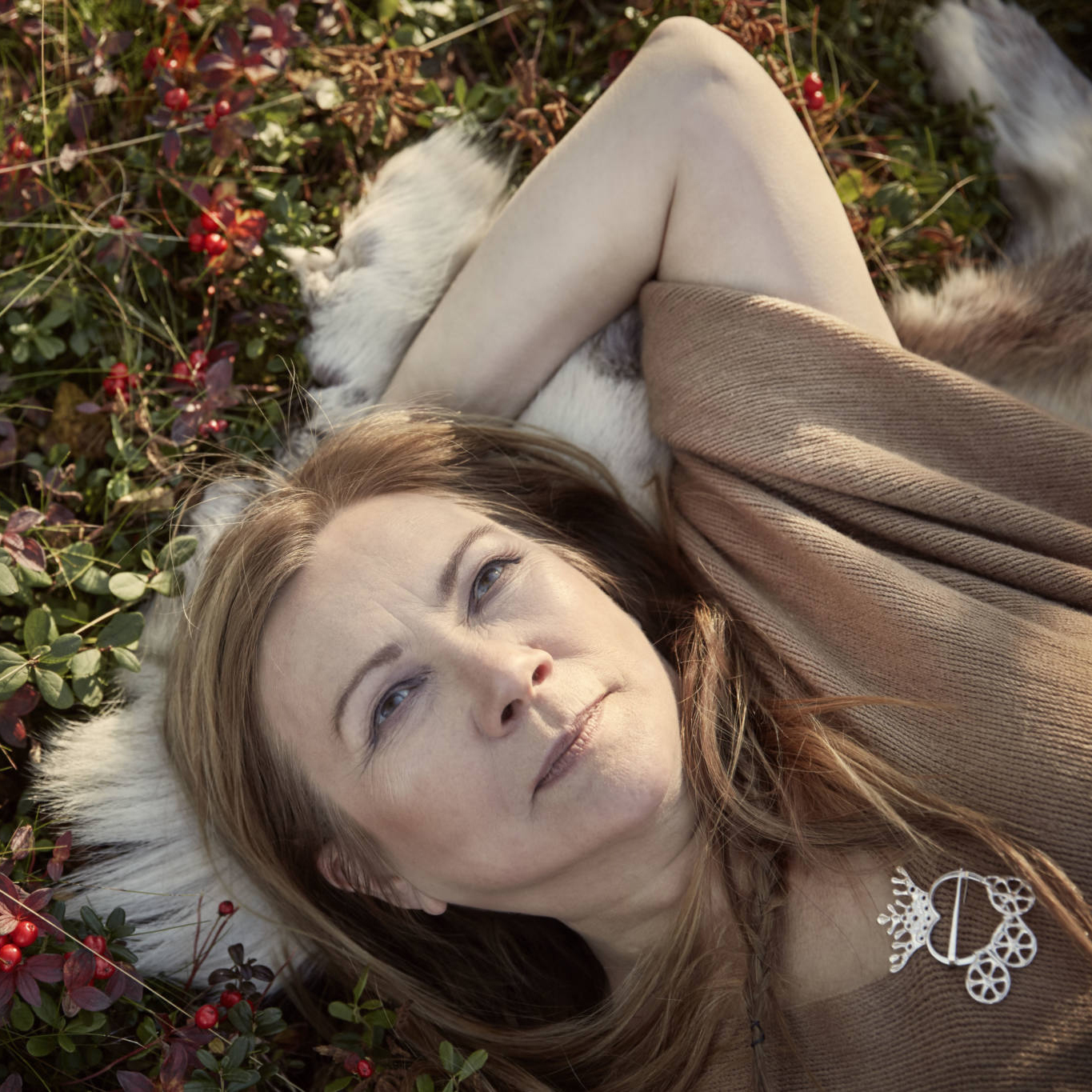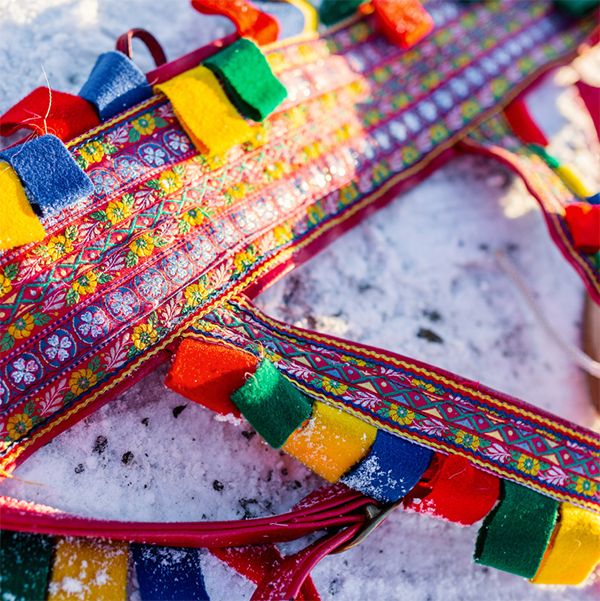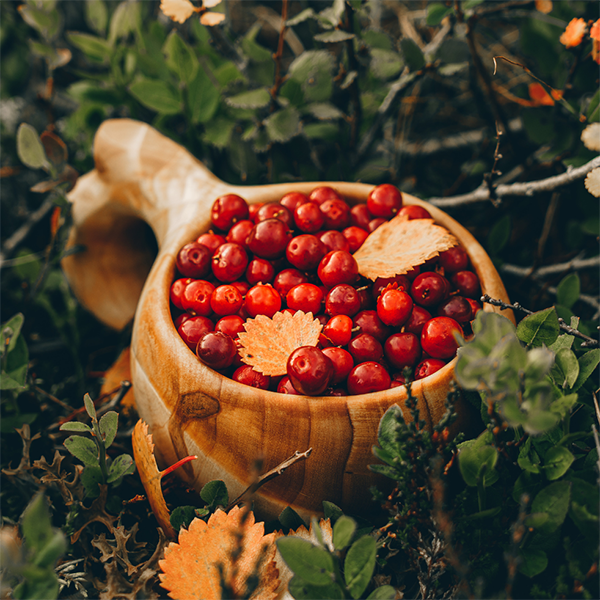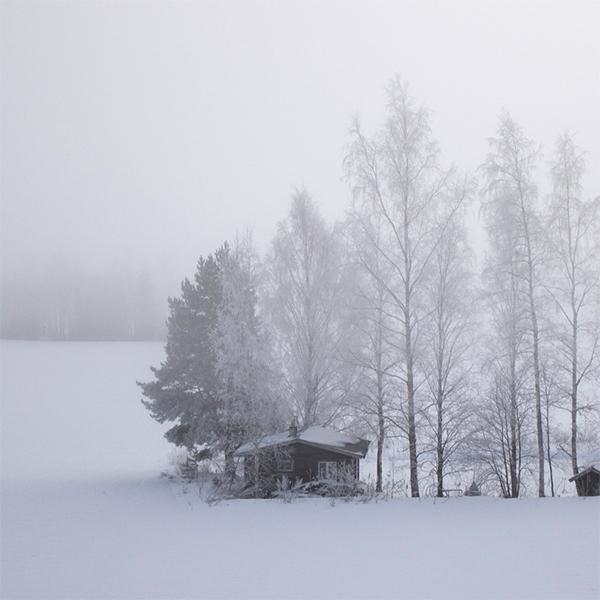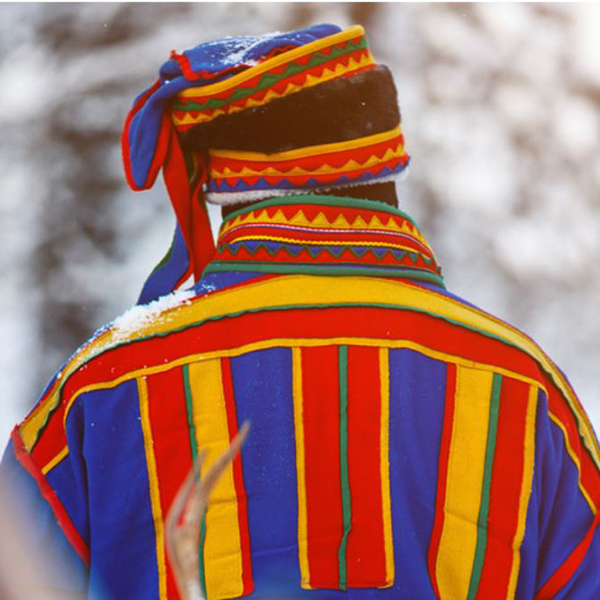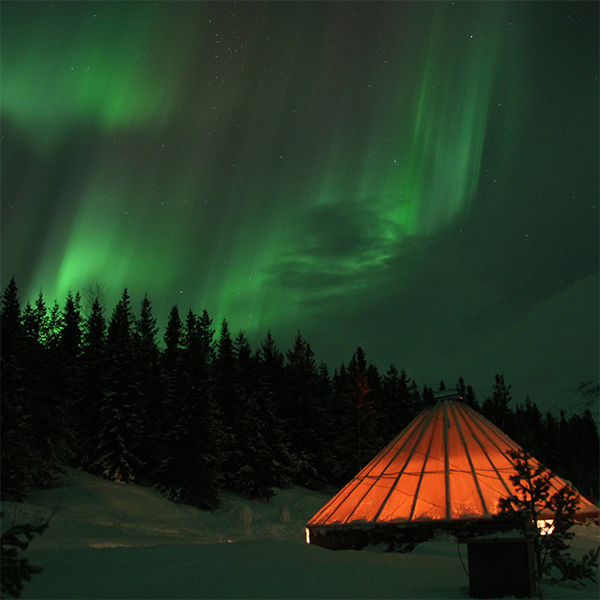Singing into Being
Catherine Madsen
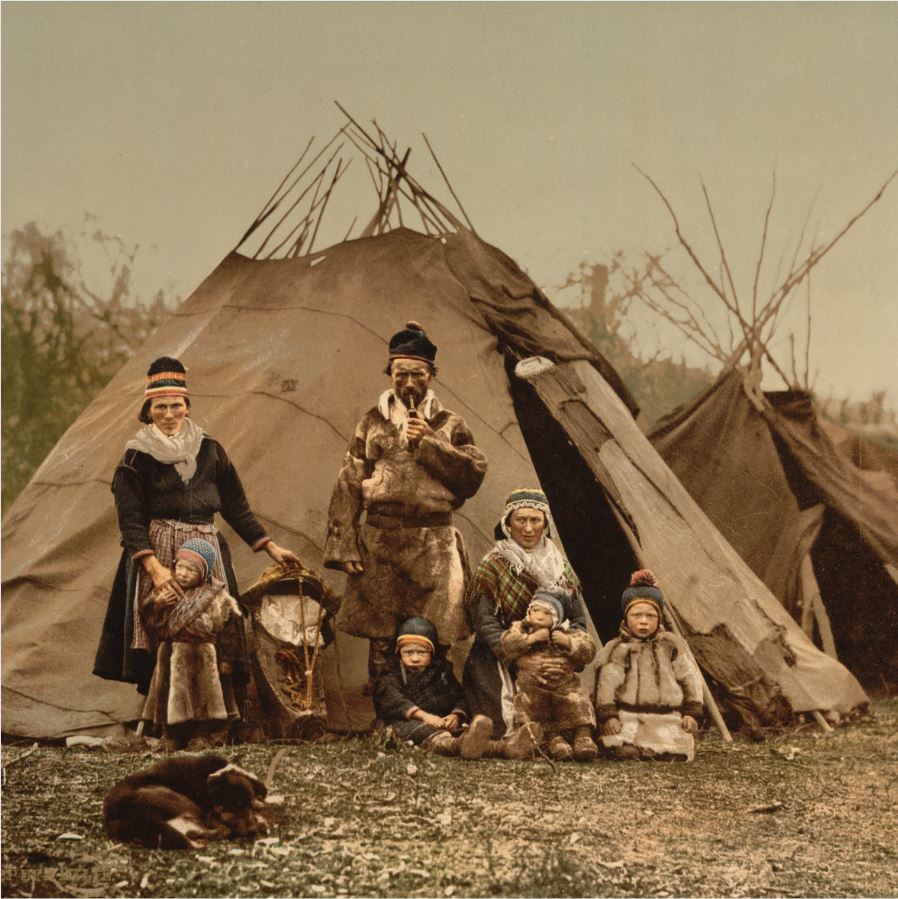
Yoik is the singing style of the Sámi, the transnational indigenous people of northern Scandinavia, Finland, and a small area of Russia (the territory called Sápmi in their own culture). In other orthographic systems the word may be spelled joik or jojk. It’s thought to be one of the oldest surviving singing traditions in Europe. Traditionally unaccompanied and often sung in wordless syllables, yoik is a musical language of feeling: a yoik describes or evokes an emotion, a person, a landscape, an animal, or whatever the singer may choose. “We don’t sing about,” says yoik singer Mari Boine, “we sing into being—a person, landscape, animal, situation.” A yoik can be joyous, loving, contemplative, haunting, angry, danceable, humorous; always it feels intimate and confident. It’s the song of a culture at home with its soul.
Things might have gone otherwise. The political situation of the Sámi from the early modern era well into the 20th century involved the suppression of culture and language, forced displacement, land grabs, boarding schools, and the use of alcohol to keep the population dependent and disorganized—phenomena all too sadly familiar to Alaska Natives. Not until 1979 were Sámi rights publicly defended, in a controversy over a proposed hydroelectric station. By the late 1980s the Sámi had a national anthem, a flag, and a parliament of their own; in the Norwegian part of Sápmi they now control their own land and natural resources (excluding oil and mineral rights, however). Yoik singing played a role in the strengthening of Sámi culture, and the story is not over yet.
The Christianization of Sápmi in the 17th century entailed the suppression of yoik and drumming, which were used in shamanic ritual. Yoik singing was regarded as a form of witchcraft and declared a capital offense, and a number of people were executed for it. (Shamanism continued to be practiced in secret for some time, but under grave penalties.) In the 19th century, Sámi preacher Lars Levi Laestadius founded an exceedingly strict Lutheran revival movement which, among other austerities, proscribed rhythmic music generally. Yoik was a robust tradition, and survived in homes and as work music, especially in rural areas; these 1954 field recordings show it doing well. But it was utterly forbidden in churches and schools, and not until the late 1960s did anyone began to work with yoik as an art form.
That was writer and musician Nils-Aslak Valkeapää, who toured worldwide under his Sámi name of Áillohaš and mentored a new generation of performers. His work was controversial in several respects: not only was yoik still widely considered sinful among the Sámi, but from a musical standpoint he introduced unheard-of innovations like backup musicians and jazz elements. (The jazz came in after he encountered African-American music in the 1970s and was deeply inspired by it.) In spite of the controversies, his restoration of a public role for yoik was immensely energizing. This brief cut from the film The Winds of the Milky Way includes an interview with Áillohaš. (It also has some footage of reindeer herding, which viewers accustomed to wild caribou herds may watch with some cognitive dissonance.) A beautiful half-hour documentary, The Wind is Blowing through My Heart, commemorates the transformative influence of Áillohaš on Sámi music and culture.
How does yoik work in musical terms? It’s energetic and highly rhythmical, sung very loosely and in the throat, and can have interesting time signatures (5/8 and 9/8 are not uncommon). According to contemporary yoik singer Iŋgor Ántte Áilu Gaup (Sámi name Áilloš), who recently gave a Zoom presentation for the Vesterheim Museum in Decorah, Iowa, the structure of a yoik is circular, without a distinct beginning or end. In shamanic ritual, the community sang for the duration of the trance to ensure the shaman’s safe return, so the circular structure was critical in helping them to keep singing. Traditionally, new babies are given a dovdna, a personal yoik; these start out in a simple form that a child can comprehend, and are further elaborated when the child grows up. The dovdna is a sort of musical signature, which the person’s family and friends use as a greeting or an appreciation—you don’t sing your own dovdna, any more than you would announce your name to people who know you. Áilloš mentioned that there are particular family styles in yoiking, which sounds like a graduate research project waiting to happen.
There are also animal yoiks. You can yoik your dog or a reindeer, and with repetition they will come to recognize and respond to their own yoik. You can also yoik a wild animal: Áilloš gives a few examples of animal yoiks at around 16:00-20:30 in his presentation. Ánde Somby demonstrates some other animal yoiks here —including one of considerable interest to circumpolar dwellers, the mosquito; note the verisimilitude of his vocal production as he yoiks the bug.
By what misunderstanding could this rich and versatile tradition have been considered dangerous? The history of yoik is a caution to anyone who crosses intercultural boundaries with the sense of a moral mandate. Mari Boine, raised a Laestadian Lutheran, grew up hearing her father’s sermons about the demonic nature of the old Sámi animism, yet she later discovered it to be a tradition of interspecies kinship and gratitude. She became an internationally renowned yoik singer and activist, a process she describes in speech and song in her affecting TED talk. She points to the confluence of science and indigenous knowledge in recognizing rhythm as fundamental to human life—the reciprocity between the heartbeat and the drum, which the Laestadians in their stringency would have severed.
Kathleen Marie Higgins argues in The Music between Us that music provides a sense of ontological security, a sense that we’re not alone in the world. There’s a place for the uneasy conscience and the confrontation with an accusing God, but it’s not a place we can live in 24/7; we need the intimate, down-to-earth, understanding human voice, the sense of living among comprehending fellow beings. We need to be at home with our souls. Yoik singers, carrying on against all odds, continue to show the way.
Resources
Click the links below to learn more about the artists and topics mentioned in the article.
About the Author

Catherine Madsen is a writer, singer and folk harper now living in Michigan. The three years she spent in Fairbanks as a child (1962-65) were a turning point in her life, and she established the Circumpolar Music Series as a gift of gratitude.


